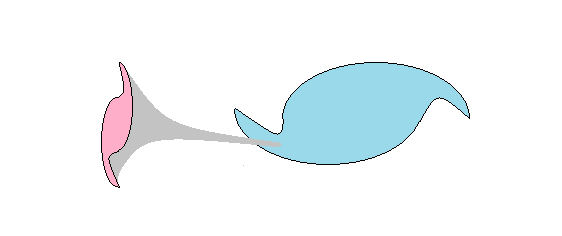This is different from my position that fusion is almost always endothermic. Only the fusion of heavy isotopes can be exothermic. This position is strengthened by the recent discovery that lone protons are lighter than assumed. With less mass to convert into energy, fusion of light elements into heavier ones is less likely to be exothermic.
This again strengthens my position that stars are fission powered electrical accelerators. Our sun is powered by a combination of electrical input and fission. It is not powered by fusion.
Further support for my position is the fact that neutrinos produced by nuclear fusion on the Sun have been extremely hard to find. If the Sun is a fusion reactor, then neutrinos from the Sun should be plentiful and easy to find. That turned out to be anything but true. The only way out of the quagmire was to invent three different flavors of neutrinos, a sure sign of desperation by the theorists. The rapid plurification of subatomic particles needed to support standard cosmology is a sign of a theory in decline.
However, even if the theory that fusion is exothermic up until iron is correct, the fact that stars are the product of supernovas suggest that fission, rather than fusion is the main nuclear process going on in stars. After all, there is general agreement that supernovas produce large amounts of heavy elements needed for fission processes.
Since stars cannot form through so called gravitational collapse of gases, the only remaining theory as to how stars are formed is that of star formation by supernova. We can therefore assume that all stars are rich in fissionable material.
Adding Halton Arp's theory of mass condensation to the above, we get that everything becomes more fissionable over time. Material that is perfectly stable at one point in time will eventually become unstable and radioactive as it condenses mass onto its atomic nuclei. This means that stars get a steady supply of new fissionable material as time goes on.
It also means that all things will eventually turn radioactive unless there is some upper limit to how much mass can be condensed onto atomic nuclei. Eventually, everything will become radioactive. In the end, even helium will be radioactive. Helium will fission into hydrogen. All that will be left is hydrogen with a large blue-shift to its light spectrum.
At this point, I suspect something very dramatic will happen. Hydrogen nuclei will suddenly reverse the process of condensation. There will be catastrophic destruction. The atomic nuclei will evaporate into tiny quanta of matter together with massive radiation.
Jets of gamma ray radiation together with seeds of light matter in the form of electrons, positrons and neutrinos will pour out of region of extreme blue-shifted. These jets will form extremely red-shifted objects known as quasars, young galaxies formed from the ashes of dying arms of old galaxies. In this way, the universe is perpetually producing new galaxies from old ones.
If I'm right in this hypothesis, young quasars, still connected to their mother galaxy through a jet of radiation, should emanate from regions rich in blue-shifted hydrogen. There may also be an abundance of blue-shifted helium and other light elements, but there will be no heavy elements, only heavily blue-shifted light ones.
 |
| Blue-shifted galaxy producing red-shifted quasar |
No comments:
Post a Comment